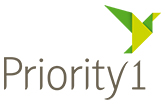
Approval
Aged care can be a tricky area to navigate, and requires careful thought. To help you or your loved one obtain the best outcomes, this three-part guide will take you through the process of applying for, receiving, and paying for suitable aged care services.
This first part of the series will look at how Government subsidised aged care services can be accessed.
You will understand the assessments required to determine whether you, or your loved one, is eligible to receive aged care.
More Australians are using aged care services each year. Whilst it may seem daunting at first, the aged care system has improved significantly over the last few years, with a strong focus on ensuring help and resources are available to help you every step of the way.
You can access aged care services through a non-government subsidised provider of aged care anytime. However, if you wish to access government subsidised aged care, the first step involves an assessment. This assessment will help identify the type of services you may be eligible for.
The assessment process
An assessment will be completed to work out your care needs and identify the type of support you may be eligible for. This is a free service which you can start by calling My Aged Care (the Government service for aged care) on 1800 200 422.
During the call, a client record will be created to register you with My Aged Care. To create this record, you will be asked about your current needs, any aged care services you may already receive and the results of any prior assessments.
They will seek to find out more information about how you are managing around the home, any health concerns you may have, and any support from family or friends you receive. Openness and honesty will ensure they can fully understand your care needs.
ACAT/ACAS or RAS assessment
If you have been referred for an assessment, an assessor will contact you to arrange a time that suits you best to come and visit you in your home. An assessment is provided by a local assessor from an Aged Care Assessment Team or ACAT. In Victoria, this service is provided by an Aged Care Assessment Service or ACAS. If you have low-level care needs, an assessment may otherwise be provided by a Regional Assessment Service or RAS. To make sure the assessment is effective, there are a few things to prepare before the visit:
- your Medicare number
- a copy of any referrals from your doctor
- any information you already have about aged care services that you may want to discuss with the assessor
- your GP or other health professional’s contact details
- information on any support you currently receive.
- If you would like a family member, carer, or friend to be with you during the assessment, just let them know the time and date you have agreed with the assessor.
What happens during the assessment?
The assessor will have a record of all the information you provided during your initial phone call, and will look to increase their understanding of your needs by asking some more questions about:
- what support you already have and if that will continue
- your health and lifestyle, and any health concerns
- if you have problems with your memory
- how you are going with daily tasks and activities around the home
- any issues with home and personal safety.
You can ask questions of your own, such as what services are available and whether there are any service providers in your area.
Working together, you will develop a support plan that includes your strengths, difficulties, goals and preferences for your aged care services.
After the assessment
Your assessment will determine your eligibility to access services at home or in a residential aged care facililty. If you are assessed as eligible to access services, you will receive an approval letter and support plan that sets out the services you are approved to access. If you are not approved to access services, you will receive a letter stating why and who to contact for more help.
